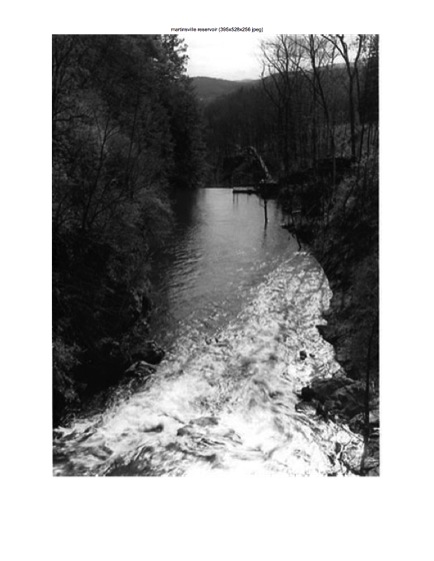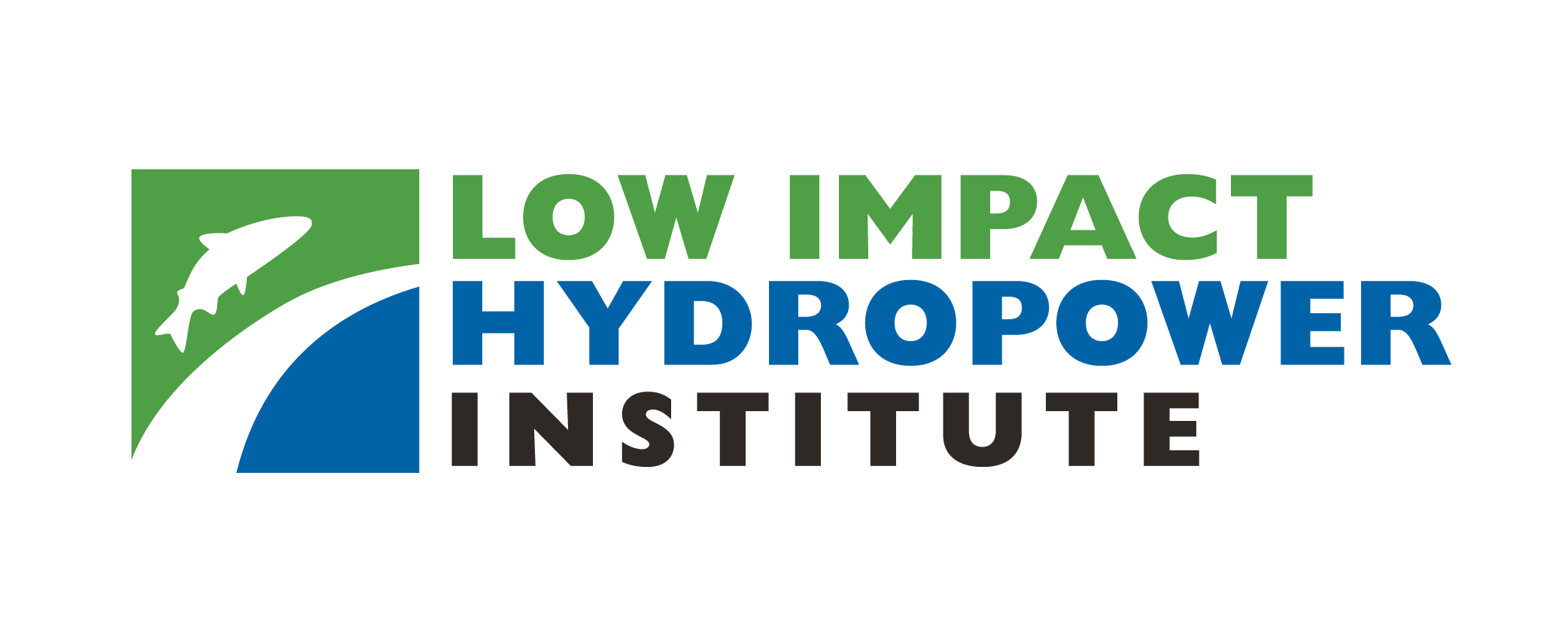Certificat LIHI #85 - Projet Martinsville, Vermont

| Nom du projet | Martinsville |
| Numéro de certificat LIHI | 85 |
| Durée du certificat LIHI | 30 avril 2016 – 30 avril 2026 |
| Propriétaire | Martinsville Hydro Corp. |
| État | Vermont |
| Emplacement | Situé au mile 0,8 de la rivière sur Lulls Brook à Hartland, Vermont. |
| Capacité installée | 0,25 MW |
| Génération annuelle moyenne | 750 MWh |
| Type d'établissement | Au fil de l'eau |
| Fédération internationale de radio-télévision (FERC) Non. | P-7373 délivré en 1984, expire le 30/11/2034 |
Le projet Martinsville est situé dans le village de Hartland Three Corners, à Hartland, dans le Vermont, sur le ruisseau Lulls. Il a été construit en 1984 sur le site d'un ancien crèche en bois barrage dont les restes ont été emportés par les eaux en 1973. Les opérations ont débuté en 1986.
Le projet comprend un pont en béton de 15 pieds de haut et de 49 pieds de long barrage-poids avec 4 pieds de haut tableaux d'affichage le long d'une longueur de 37 pieds déversoir section du barrage ; une structure de prise d'eau sur le côté ouest du barrage ; une douve en bois de 3 pieds de diamètre et de 455 pieds de long conduite forcée section menant à une section de conduite forcée en acier de 3 pieds de diamètre et de 100 pieds de long ; centrale contenant deux unités de production alimentées par deux turbines Ossberger d'une capacité installée totale de 250 KW; et les installations annexes.
L'usine est entièrement automatisée, équipée d'un équipement haut de gamme contrôleur logique programmable avec surveillance Internet et contrôle à distance, pour un fonctionnement stable et un contrôle du niveau de l'étang - le tout entretenu par le propriétaire-exploitant qui habite à proximité.
Le projet opère dans un au fil de l'eau Le projet prévoit un débit minimal de 11 pi³/s et un débit annuel moyen de 39 pi³/s. Un débit de dérivation de 2 pi³/s est prévu, et tous les débits sont déversés par-dessus le barrage lorsque le débit entrant est inférieur à 4 pi³/s. Ce régime d'écoulement a été élaboré en consultation avec l'Agence des ressources naturelles du Vermont (VANR).
Les eaux de la zone du projet ne sont pas classées comme eaux de surface altérées au sens de l'article 303(d), mais une évaluation plus approfondie est nécessaire pour leur inclusion dans les futures listes 303(d). La sédimentation due au ruissellement des routes de gravier pourrait être à l'origine de cette inscription, ce qui nécessite une évaluation complémentaire. La consultation du VANR a conclu que le projet n'a pas d'impact négatif sur la qualité de l'eau de la rivière.
Non passage des poissons Aucune prescription n'a jamais été envisagée ni proposée pour le projet, car la section du ruisseau contournée par la conduite forcée est un chenal à forte pente, composé de chutes et de bassins peu profonds, sur une corniche en grande partie érodée. Le barrage ne constitue pas un obstacle à la migration vers l'amont, car la forte pente constitue une barrière naturelle au passage des poissons. Une consultation auprès du Service national des pêches maritimes a révélé qu'aucune espèce anadrome n'était historiquement présente dans la zone du projet. Catadrome Des espèces telles que l'anguille d'Amérique étaient probablement présentes dans la zone du projet, mais ont depuis été extirpé de la zone par les barrages en aval du fleuve Connecticut. Des mesures de passage des anguilles sont actuellement en cours d'évaluation aux barrages du fleuve Connecticut. Une future prescription de passage sera probablement émise pour le projet une fois que les projets en aval auront installé avec succès des mesures de passage des anguilles.
Le terrain du projet s'étend sur environ 800 m². Les terrains environnants sont principalement constitués de pentes abruptes, de zones fortement boisées et de corniches rocheuses. La zone du projet ne présente aucune valeur écologique significative en raison de sa faible emprise et de ses gorges abruptes.
À l'exception de quelques individus de passage, aucune espèce menacée ou en voie de disparition n'est potentiellement présente à proximité du projet. Une consultation auprès du bureau local de l'USFWS en Nouvelle-Angleterre confirme l'absence d'espèces inscrites sur la liste fédérale, et l'analyse de l'outil de cartographie du VANR (Environnemental Interest Locator) indique qu'aucune espèce inscrite sur la liste fédérale n'est présente à proximité du projet.
En consultation avec la Division du Vermont pour la préservation historique, il a été conclu que le projet n'abrite aucune ressource historique ou culturelle dans la zone du projet ou à proximité.
Hormis la signalisation des conditions dangereuses, le projet ne requiert aucune autre activité récréative, car le réservoir a la taille d'une piscine olympique et son emplacement restreint ne permet pas un accès public sécurisé. L'accès public est gratuit, mais difficile en raison du terrain escarpé et de la proximité d'une route nationale. Le Département de la conservation de l'environnement du Vermont juge l'accès « pratiquement impossible et, au mieux, dangereux ».
État de conformité
Il n'existe aucune condition spécifique à l'établissement dans le certificat actuel
2025: Aucun changement important ni problème de conformité n'ont été identifiés. Le projet reste conforme sur la base de l'examen annuel.
2024: Aucun changement important ni problème de conformité n'ont été identifiés. Le projet reste conforme sur la base de l'examen annuel.
2023: Aucun changement important ni problème de conformité n'ont été identifiés. Le projet reste conforme sur la base de l'examen annuel.
2022: Aucun changement important ni problème de conformité n'ont été identifiés. Le projet reste conforme sur la base de l'examen annuel.
2021: Aucun changement ni problème de conformité n'a été signalé. Le projet reste conforme sur la base de l'examen annuel.
2020: Aucun changement ni problème de conformité n'a été signalé. Le projet reste conforme sur la base de l'examen annuel.
2019: Aucun changement ni problème de conformité n'a été signalé. Le projet reste conforme sur la base de l'examen annuel.
2018: Aucun changement ni problème de conformité n'a été signalé. Le projet reste conforme sur la base de l'examen annuel.
2017: Aucun changement ni problème de conformité n'a été signalé. Le projet reste conforme sur la base de l'examen annuel.
2016: Le rapport annuel pour le certificat actuel n’est pas encore entré en vigueur.
Historique des certifications
1er janvier 2022 : La durée du certificat LIHI a été prolongée conformément à la révision 2.05 du manuel de certification LIHI 2e édition publié le 1er janvier 2022. Reportez-vous au tableau des établissements ci-dessus pour connaître la nouvelle durée.
27 février 2017 : Le 20 janvier 2017, Shannon Ames, directrice générale du LIHI, exerçant les pouvoirs délégués par son conseil d'administration, a rendu une décision de certification préliminaire attestant que le projet hydroélectrique de Martinsville (FERC n° P-7373) satisfait aux critères de certification du LIHI. Conformément à la section 4.2.5 du LIHI 2,nd L'avis de décision préliminaire de certification a été publié sur le site web de l'Institut et envoyé à la liste de diffusion des parties prenantes le 23 janvier 2017. Un délai de 30 jours a été accordé à toute personne ayant formulé des commentaires sur la demande initiale pour interjeter appel, et aucune demande d'appel n'a été reçue. Le projet Martinsville est désormais considéré comme certifié par le LIHI pour une durée de cinq (5) ans. La date d'entrée en vigueur de la certification pour le projet Martinsville est le 30 avril 2016 et expire le 30 avril 2021.
5 août 2016 : Le 27 juillet 2016, le Low Impact Hydropower Institute a reçu une demande complète de renouvellement de la certification Low Impact pour le projet hydroélectrique de Martinsville. Les documents de candidature sont disponibles dans la section « Fichiers » ci-dessous. Le LIHI sollicite les commentaires du public sur cette demande. Plus précisément, nous souhaitons savoir si, selon vous, le projet de Martinsville continue de répondre aux critères de certification Low Impact du LIHI. Veuillez consulter le programme et les critères dans la version révisée du LIHI. Manuel Consultez ensuite les documents de candidature 2016 publiés sur la page du projet. Les commentaires directement liés aux critères spécifiques du LIHI (débits, qualité de l'eau, passage des poissons, etc.) seront les plus utiles, mais tous les commentaires seront pris en compte. Vous pouvez envoyer vos commentaires à l'Institut par courriel à l'adresse suivante : commentaires@lowimpacthydro.org avec « Commentaires sur le projet Martinsville » dans la ligne d'objet, ou par courrier adressé au Low Impact Hydropower Institute, PO Box 194, Harrington Park, New Jersey 07640. Les commentaires doivent être reçus à l'Institut au plus tard à 17 heures, heure de l'Est, le 5 octobre 2016. à prendre en considération. Tous les commentaires seront publiés sur le site Web et le candidat aura la possibilité d'y répondre. Toute réponse sera également publiée.
3 mai 2012 : Le projet hydroélectrique de Martinsville a été certifié à faible impact pour une durée de cinq ans, à compter du 30 avril 2011 et expirant le 30 avril 2016.
3 mai 2011 : Martinsville Hydro Corporation a reçu un courriel du coordonnateur de la protection des débits fluviaux de l'Agence des ressources naturelles du Vermont concernant sa certification de la qualité de l'eau. Ce courriel est disponible dans la section « Fichiers » ci-dessous.
30 avril 2011 : Martinsville Hydro Corporation a soumis une demande de certification du projet hydroélectrique de Martinsville.
Dossiers de certification
Recertification 2016
- Rapport de recertification de Martinsville
- Demande de recertification de Martinsville
- Déclaration sous serment et renonciation de Martinsville
Certification 2011
- Rapport d'examen de la certification de Martinsville
- Questionnaire de certification de Martinsville
- Pièces jointes à la candidature
- Lettre de supplément de certification
- Lettre du Service national des pêches maritimes
- Lettre du ministère de l'Intérieur des États-Unis
- Lettre du Service américain de la pêche et de la faune sauvage
